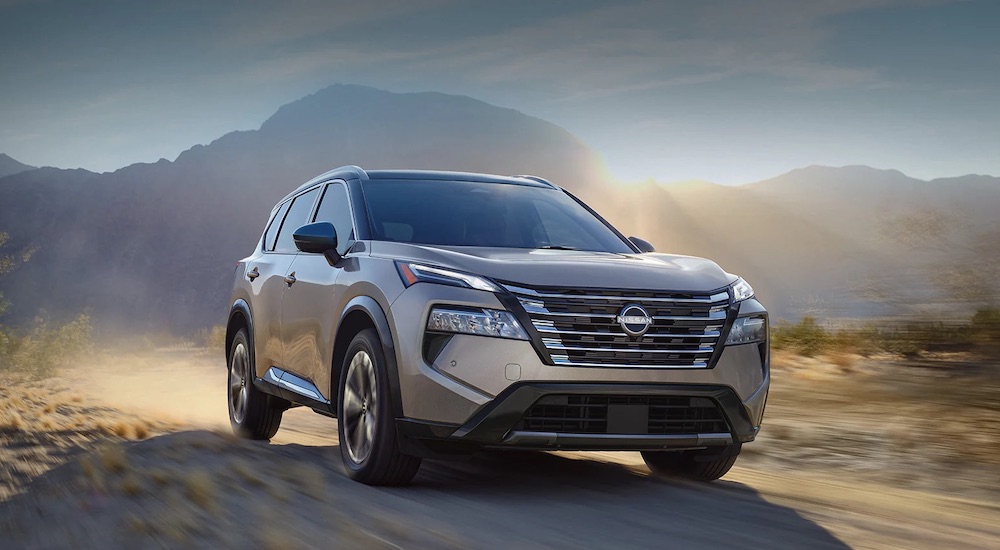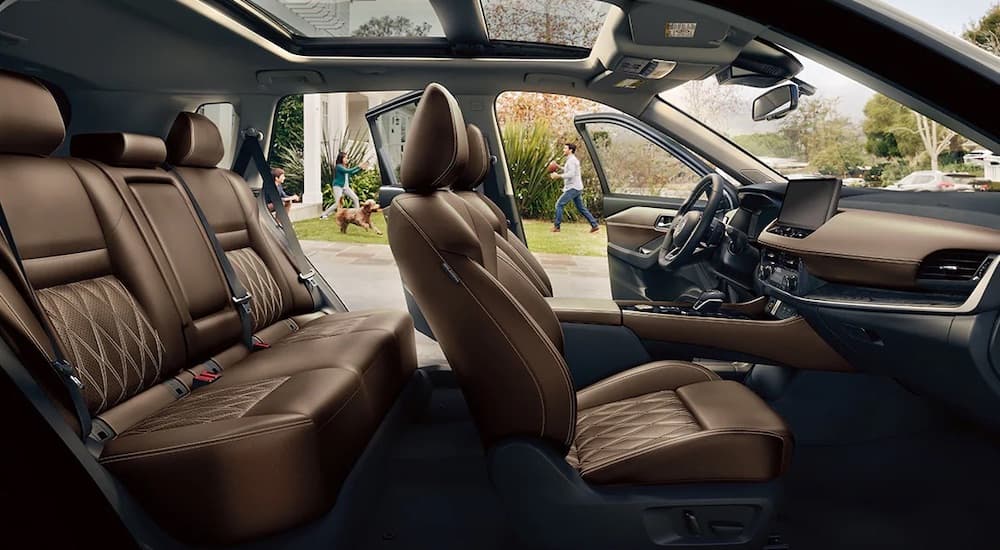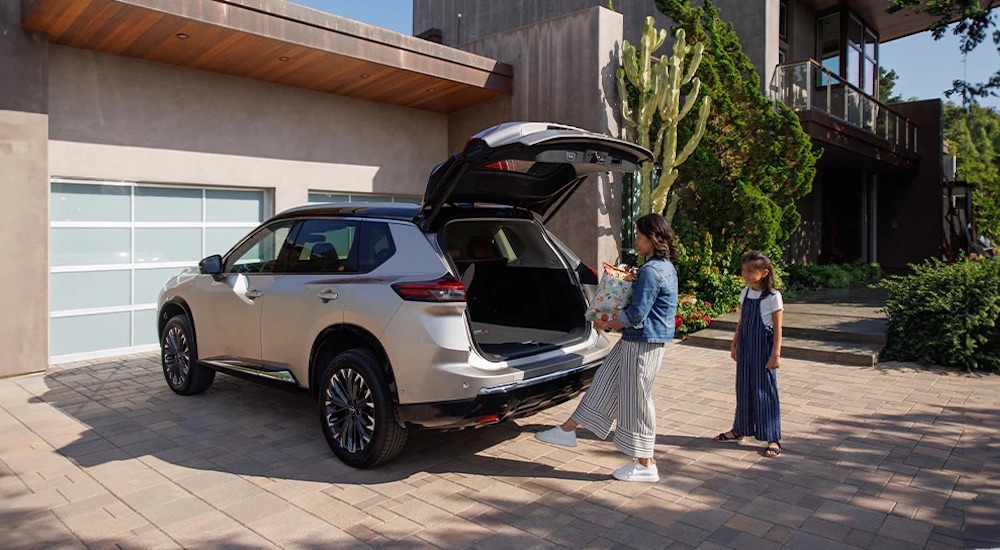
Compact SUVs are quickly becoming one of the most popular models on the road today. These small but versatile SUVs give drivers a great many capabilities, including solid fuel economy. Their ability to work well for commuters, daily drivers, young families, and older couples makes them an excellent choice.
Many models also offer a size that works well for parking in urban areas, with available all-wheel drive for better traction in inclement weather conditions. Two of the leading models are the newest Nissan Rogue for sale and the same year’s Toyota RAV4. Both boast plenty of room for five passengers, as well as standard advanced driver assistance features that help drivers avoid accidents.
However, in comparing these two models, you find that not all compact SUVs are alike. Aside from their different names and styling, there are other things that set them apart. In general, you are going to get better performance and fuel economy if you go with the 2024 Nissan Rogue over the 2024 Toyota RAV4.
This is an interesting development because you usually have to trade off performance in order to get a more fuel-efficient vehicle. This is why drivers will be better served by looking for a Nissan Rogue to call their own. At Rusty Wallace Nissan, we host the full lineup of Nissan models, including the 2024 Rogue. Come in today and see why you should choose the Rogue as your next crossover.
A Smaller But More Powerful Engine
One of the first things you are sure to notice when comparing these two models is that the Rogue actually has a smaller engine. The 2024 Rogue features a 1.5-liter VC-Turbo I-3 gas engine. This three-cylinder engine features a dual overhead camshaft (DOHC) design, which provides twelve valves for its three cylinders.
The “VC” stands for variable compression on its turbocharger, which uses less power at lower speeds to provide for improved engine efficiency. It also has a continuously variable valve timing control system; this also shuts down valves at lower speeds to provide for more efficient performance. The 1.5-liter VC-Turbo I-3 engine uses direct injection to deliver 201 hp at 5,600 RPM and 225 lb-ft of torque at 2,800-4,000 RPM.
Toyota has gone for a larger engine on all non-hybrid models of the 2024 RAV4. This is a 2.5-liter Dynamic Force I-4 gas engine; it features Toyota’s Dual Variable Valve Timing with Intelligence system to improve engine efficiency. In addition, the engine has a DOHC design, with sixteen valves for its four cylinders. However, where Nissan utilizes a turbocharger to improve performance on the Rogue, the RAV4’s engine does not have a turbocharger.
In addition, where the Rogue has direct fuel injection, the Toyota RAV4 features a dual injection system, combining direct and port-fuel injection. As a result, the RAV4’s output is limited to 203 hp at 6,600 RPM and 184 lb-ft of torque at 5,000 RPM. That means that you will get about the same horsepower but more torque when you opt for a Nissan Rogue.
Two Different Kinds of Transmissions
Nissan and Toyota have taken different approaches to the transmissions of their respective compact SUVs. Toyota has given the 2024 RAV4 a traditional eight-speed automatic transmission. This is a Direct Shift model with a sequential shift mode. Meanwhile, Nissan has equipped the 2024 Rogue with an Xtronic CVT. This is Nissan’s version of a continuously variable transmission.
A continuously variable transmission replaces a fixed set of gear ratios on an automatic transmission with an unending range of effective gear ratios. As the CVT moves through its gear ranges, you won’t experience the herky-jerky feeling you sometimes get with an automatic transmission. This allows for a more seamless acceleration on the Rogue. In addition, each Rogue trim has paddle shifters, so you can emulate the performance of a manual transmission without the hassle of working a clutch.

Somehow More Fuel-Efficient
The smaller I-3 engine on the 2024 Rogue will give you better fuel economy than the larger four-cylinder engine of the 2024 RAV4. This is the same whether you choose to stick with the front-wheel drive that comes standard on most models of both vehicles or opt for available all-wheel drive for improved traction. Both models have this option, except for certain trims that come standard with all-wheel drivetrains.
If you opt for the Rogue with front-wheel drive, you will get 33 MPG in combined fuel economy. This is better than the 30 MPG in combined fuel economy that you will get in a front-wheel drive RAV4. This difference in fuel efficiency is also seen in city and highway driving, with the Rogue giving you two to three miles more than the RAV4.
If you opt for all-wheel drive, the difference in fuel economy is still there, though not as pronounced. The Rogue with Intelligent All-Wheel Drive gets 31 MPG in combined fuel economy, while the RAV4 with all-wheel drive gets 30 MPG.
Despite Its Size, It’s Faster
One of the biggest surprises in comparing these two models is that the 2024 Nissan Rogue will outperform the 2024 Toyota RAV4, even though it has a smaller and more fuel-efficient engine. This is probably a combination of the turbocharger on the Rogue’s engine and its CVT transmission.
The result is that the Rogue will get you from zero to sixty in just 7.8 seconds, which is much quicker than the 8.4 seconds that it will take the RAV4 to reach the same speed. This will come in handy when you are trying to merge onto busy highways during rush hour. Also, while both vehicles have a top speed of around 120 mph, the Rogue will get you there faster than the RAV4 due to its quicker acceleration.
The Nissan Rogue will also do a better overall job of handling and road holding. This is shown by the performance of the two vehicles on the quarter-mile track. The 2024 Rogue can complete the quarter-mile in just 15.9 seconds at 88 mph. It will take the 2024 RAV4 a full 16.6 seconds to complete the same distance while driving at a slightly slower 87 mph.
The Rogue will also be able to brake faster than the RAV4, needing 169 feet to stop from 70 mph, whereas the RAV4 needs 185 feet when going the same speed. This could help you more easily avoid a collision when driving a Rogue as compared to a RAV4.

Towing the Line
It seems the only area where the 2024 Toyota RAV4 outperforms the 2024 Nissan Rogue is trailering. The RAV4 is rated to be able to tow up to 3,500 lbs. This is significantly more than the 1,500 lbs that the Rogue can tow. However, it is not very likely that you will be using a compact SUV for towing. It seems that most drivers will be more interested in the fuel economy and performance of their vehicles than their tow rating.
The Nissan Rogue Proves That Sometimes Smaller Is Better
Nissan demonstrates how technology can improve both fuel economy and performance on a vehicle with the 2024 Rogue. No matter which drivetrain you choose, the Rogue is going to give you better fuel economy than the RAV4. This is not surprising since the Rogue has a tighter, three-cylinder engine compared to the four-cylinder engine on the RAV4.
What is surprising is the better overall speed and acceleration. This shows how using advanced technology like continuously variable transmissions, turbochargers, and variable compression systems can allow an automaker like Nissan to deliver exceptional fuel economy while still giving drivers the performance they desire.
While both the 2024 Nissan Rogue and the 2024 Toyota RAV4 have many of the same infotainment tech, advanced safety features, and roomy interior, it is clear that only one will give you the fuel economy and performance you want. This is why you should make your next compact SUV a 2024 Nissan Rogue from our dealership!



